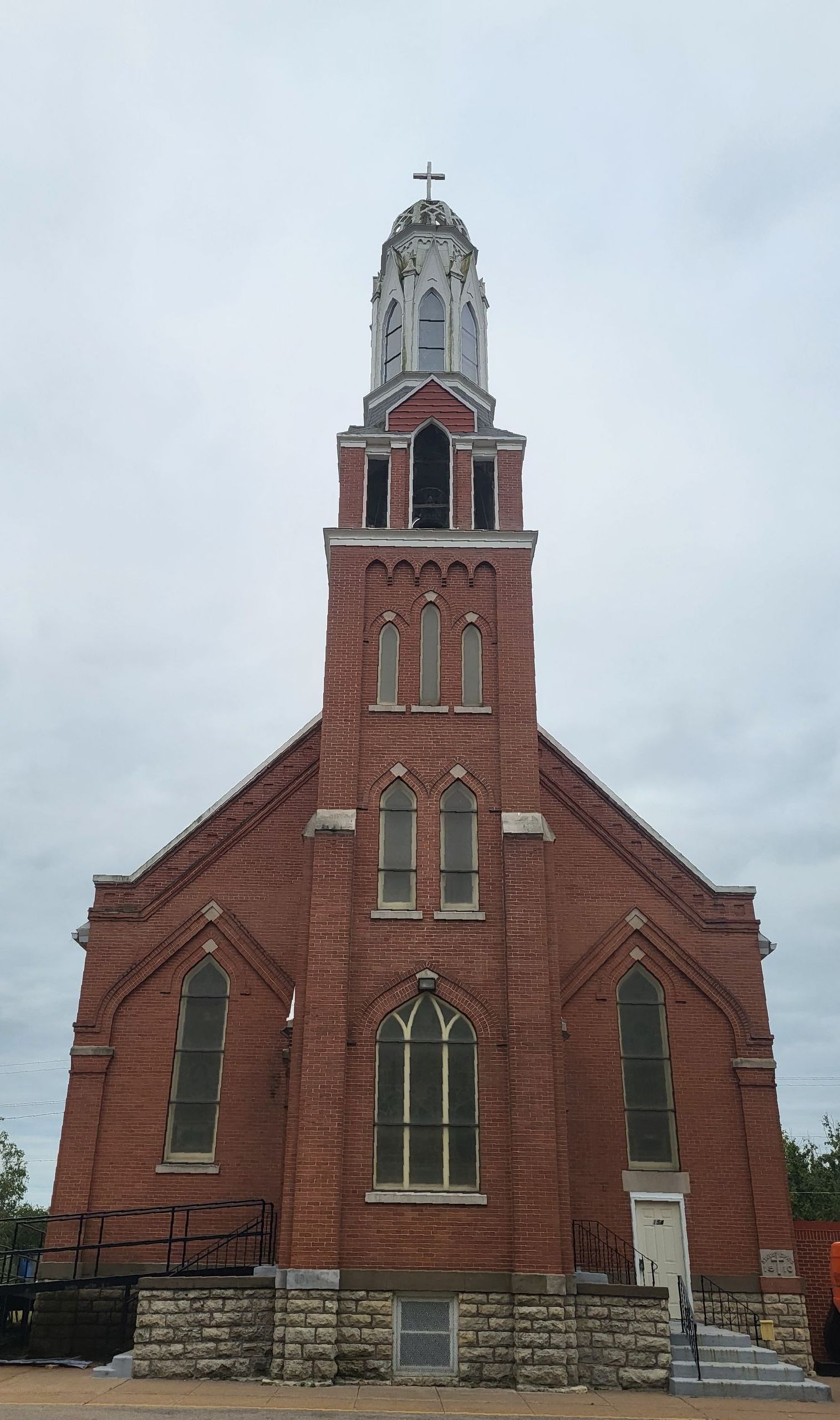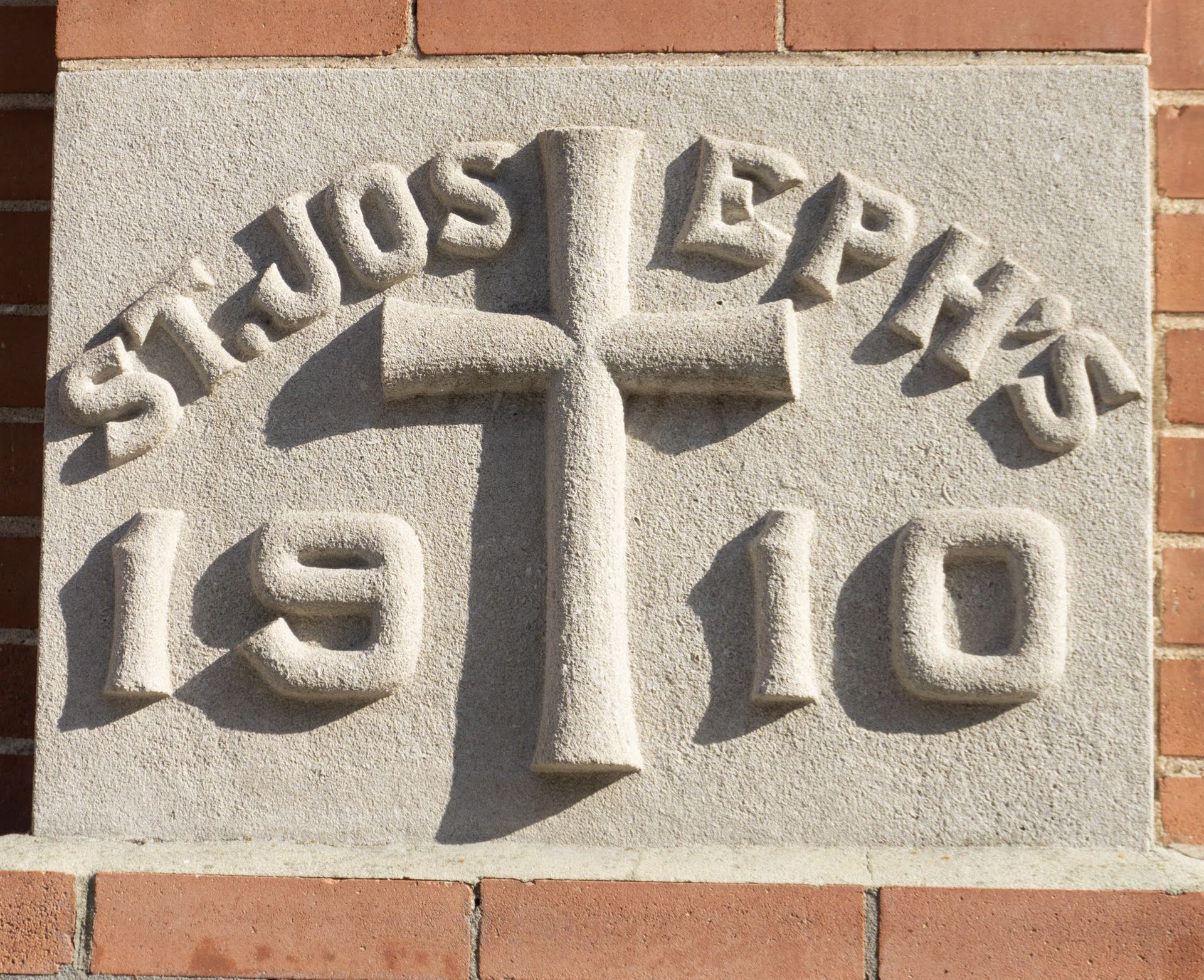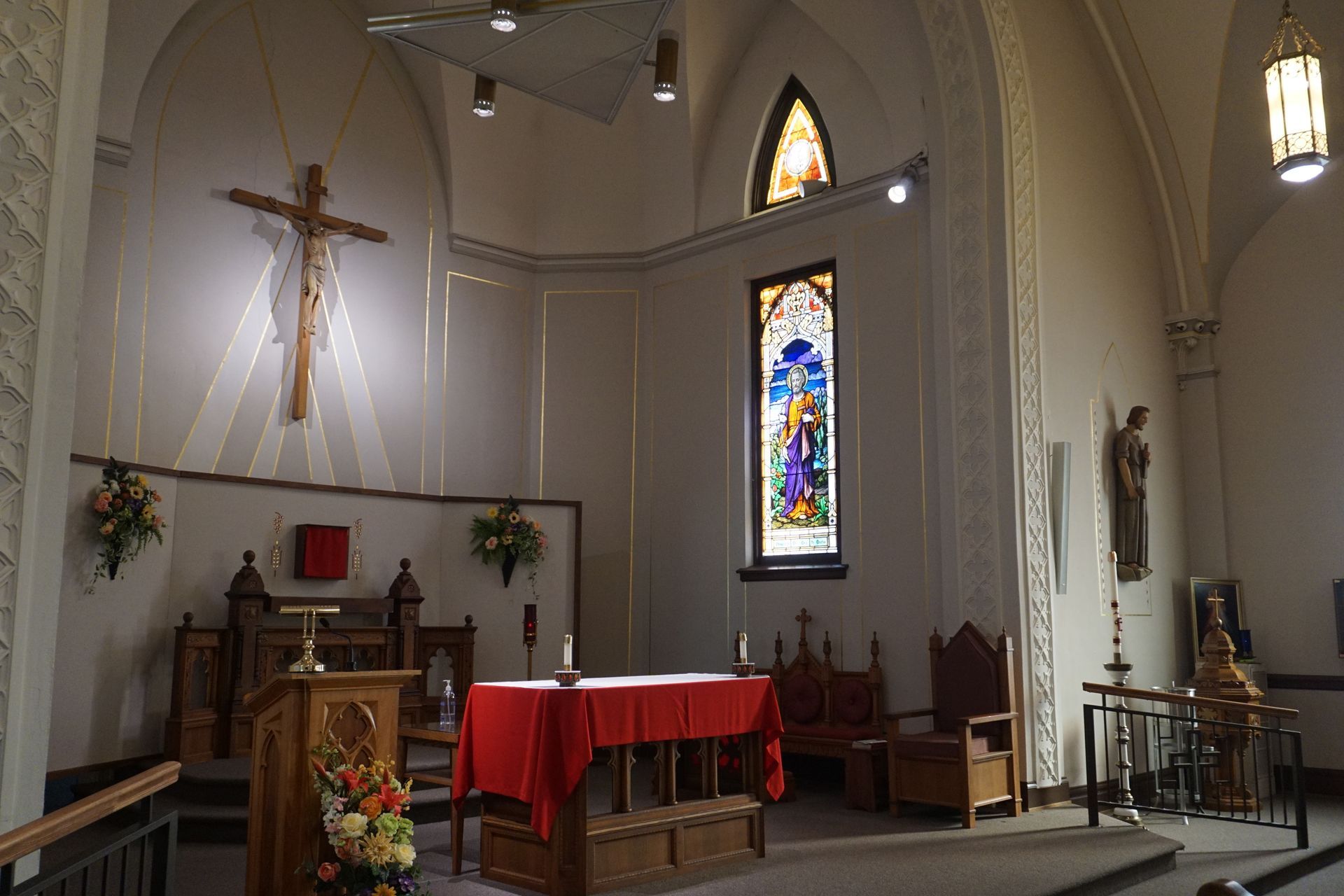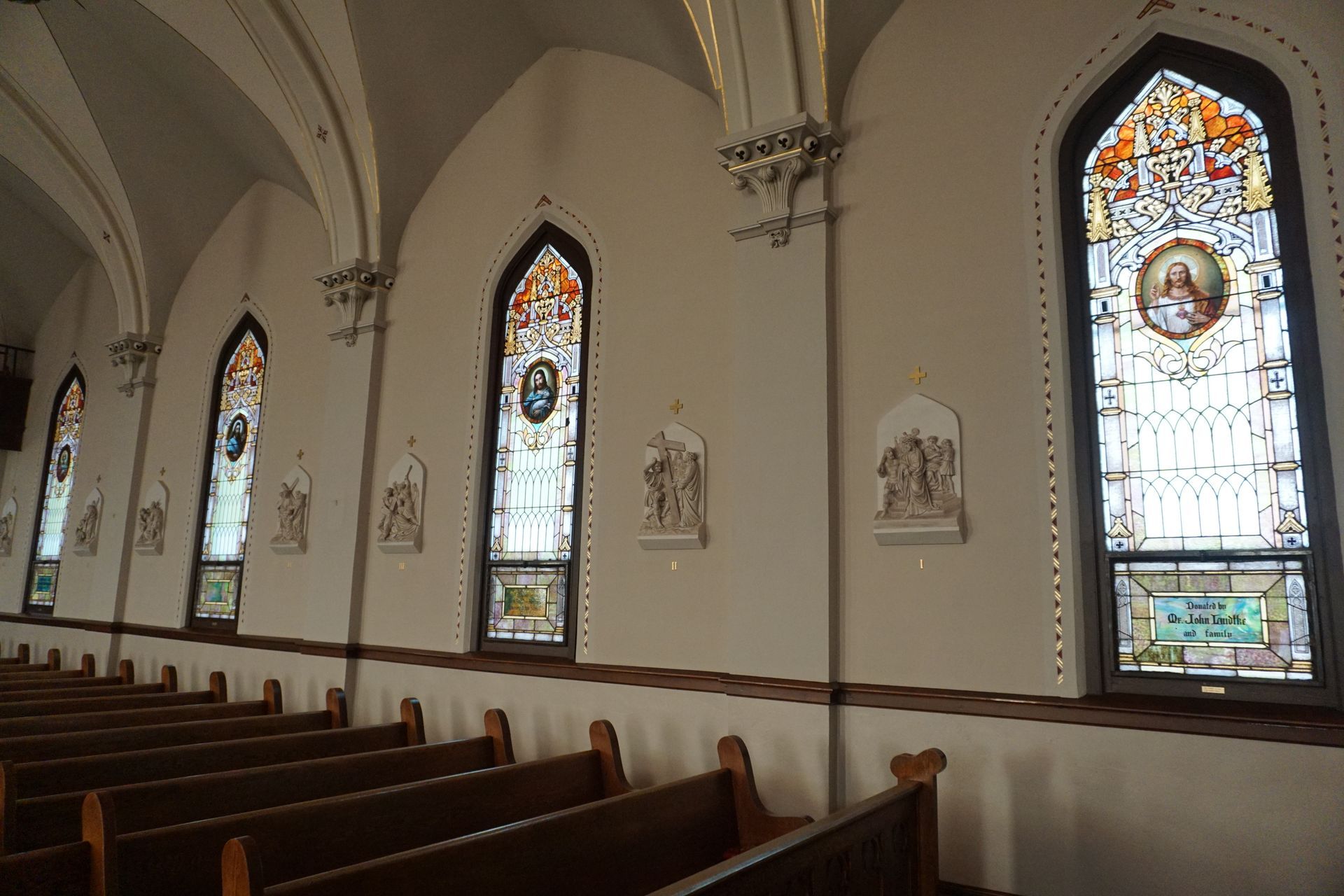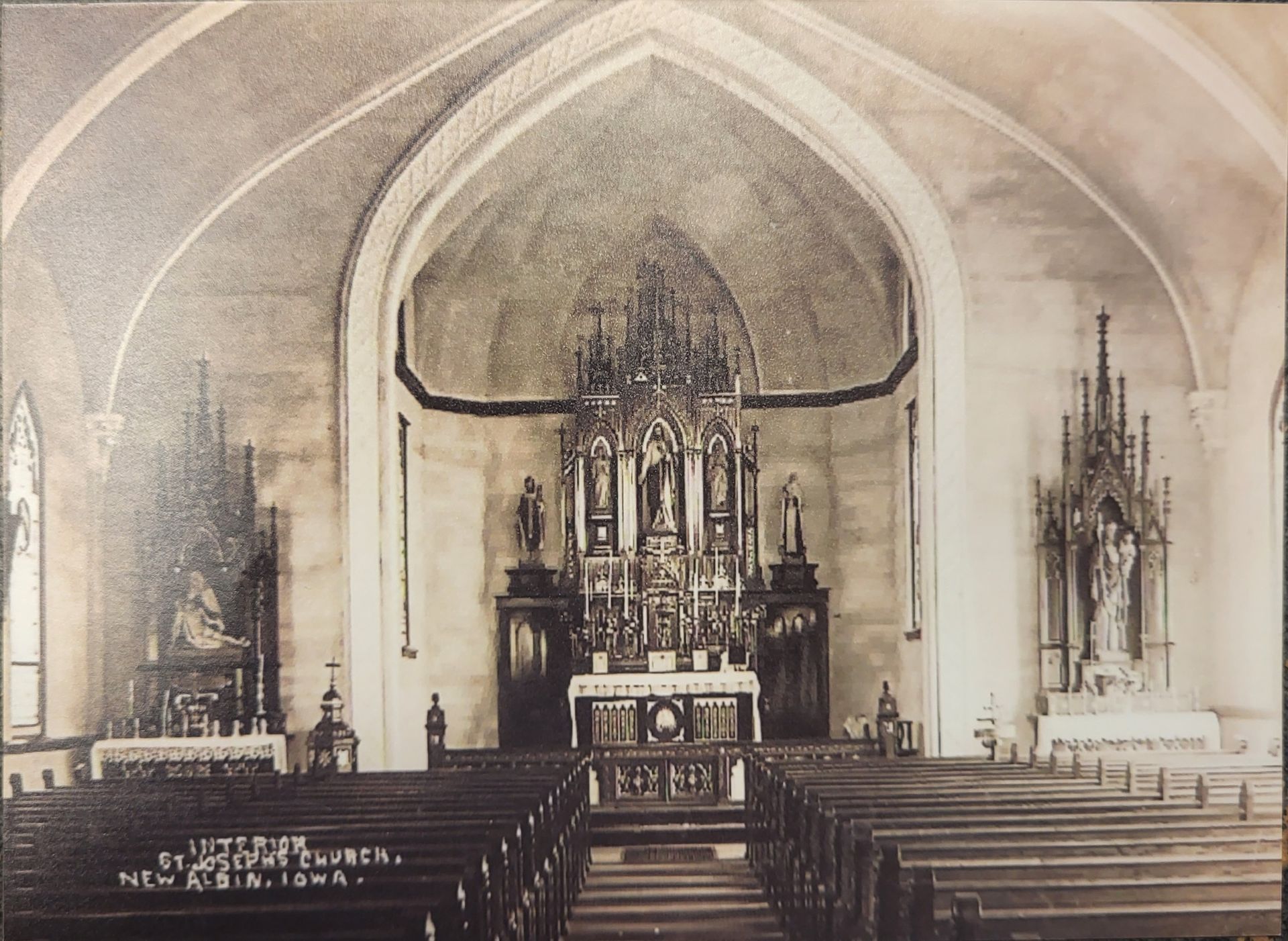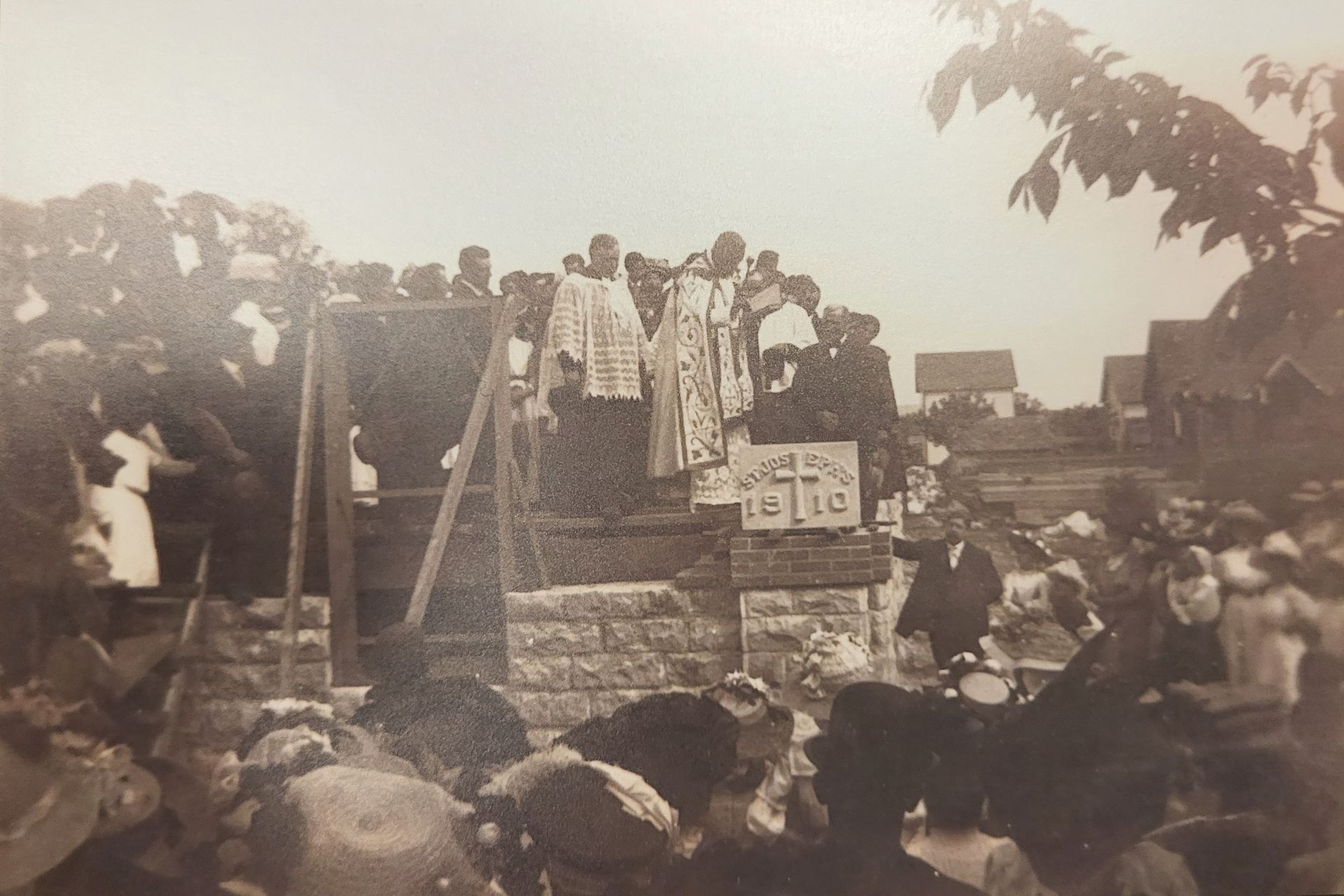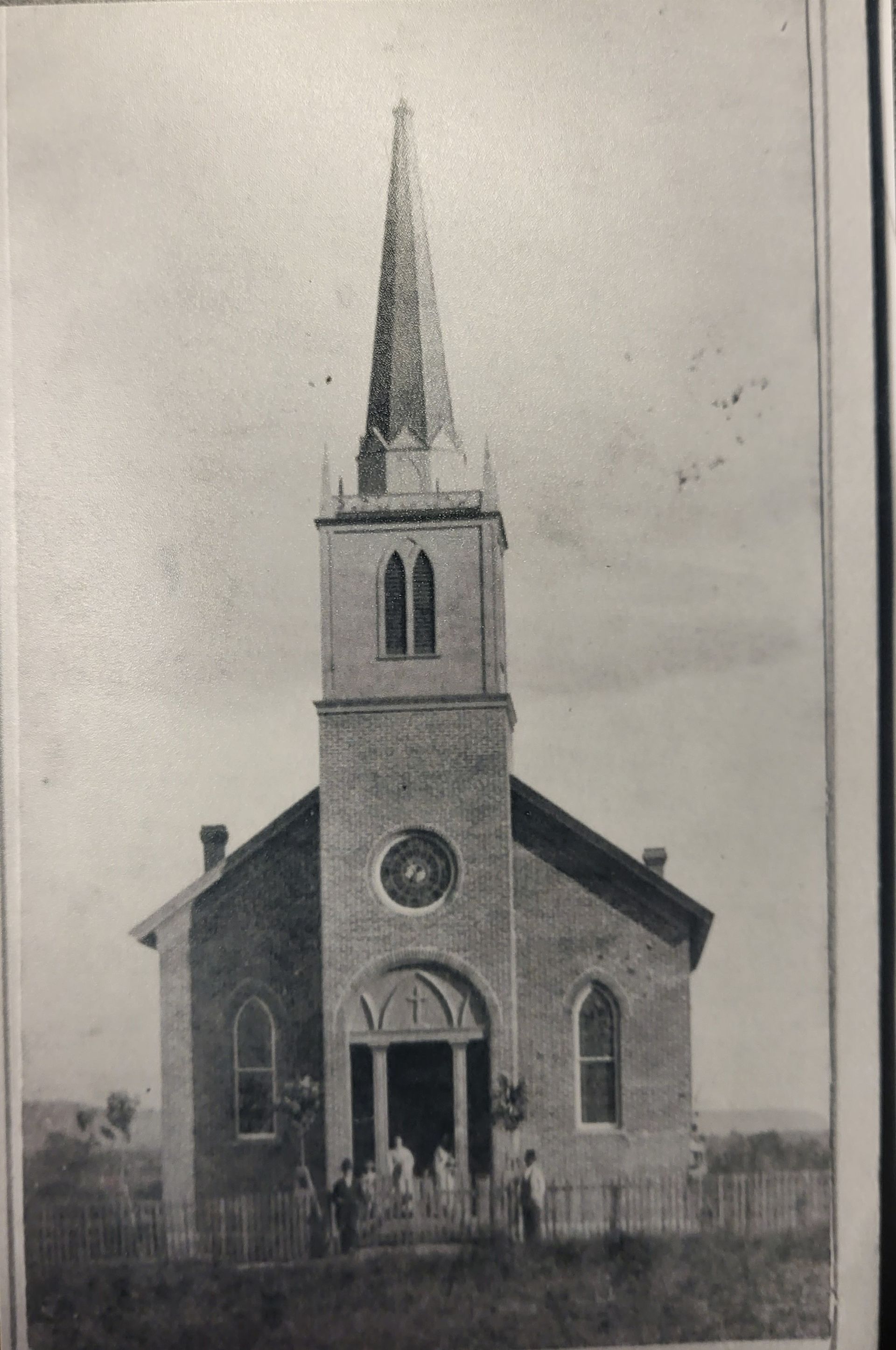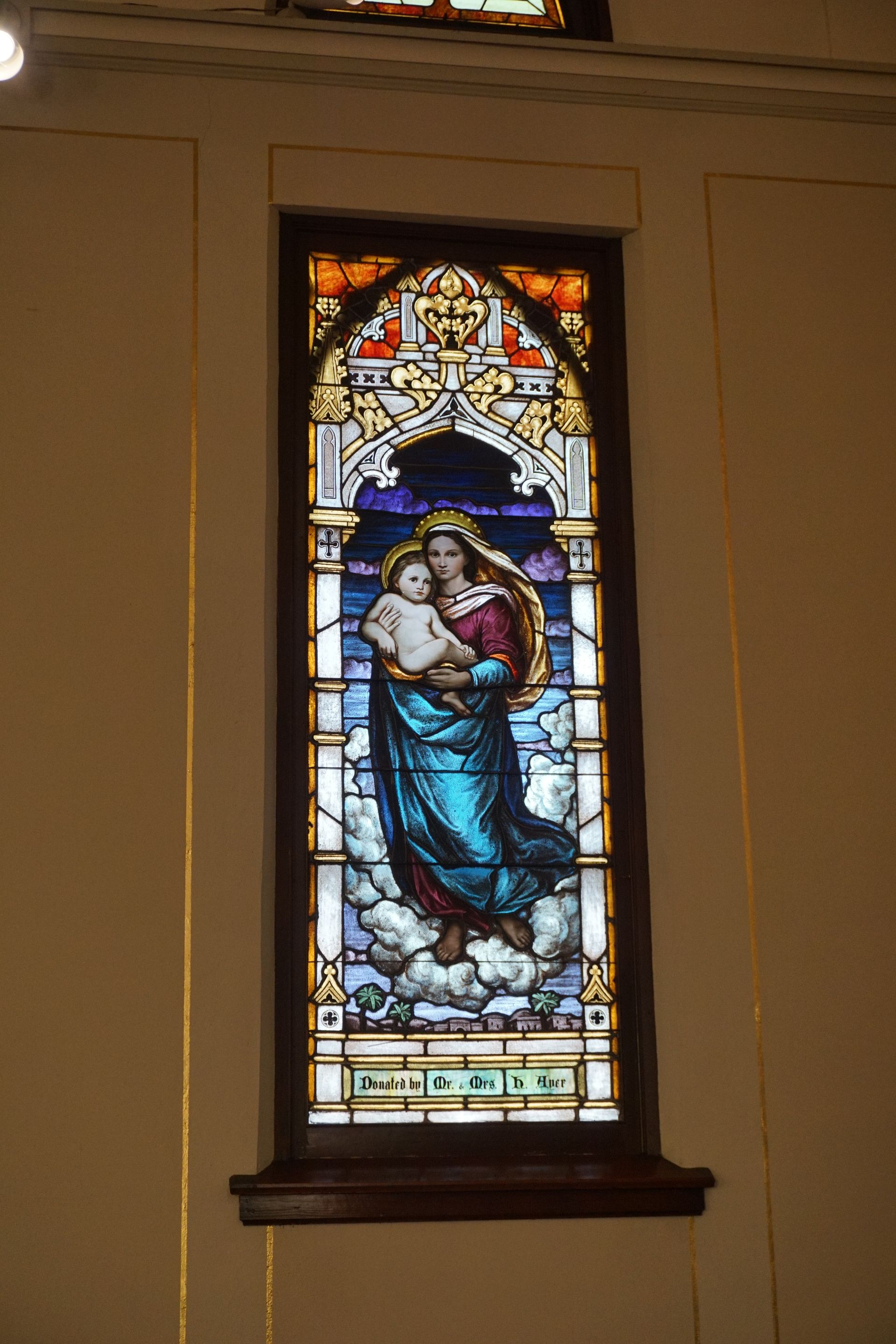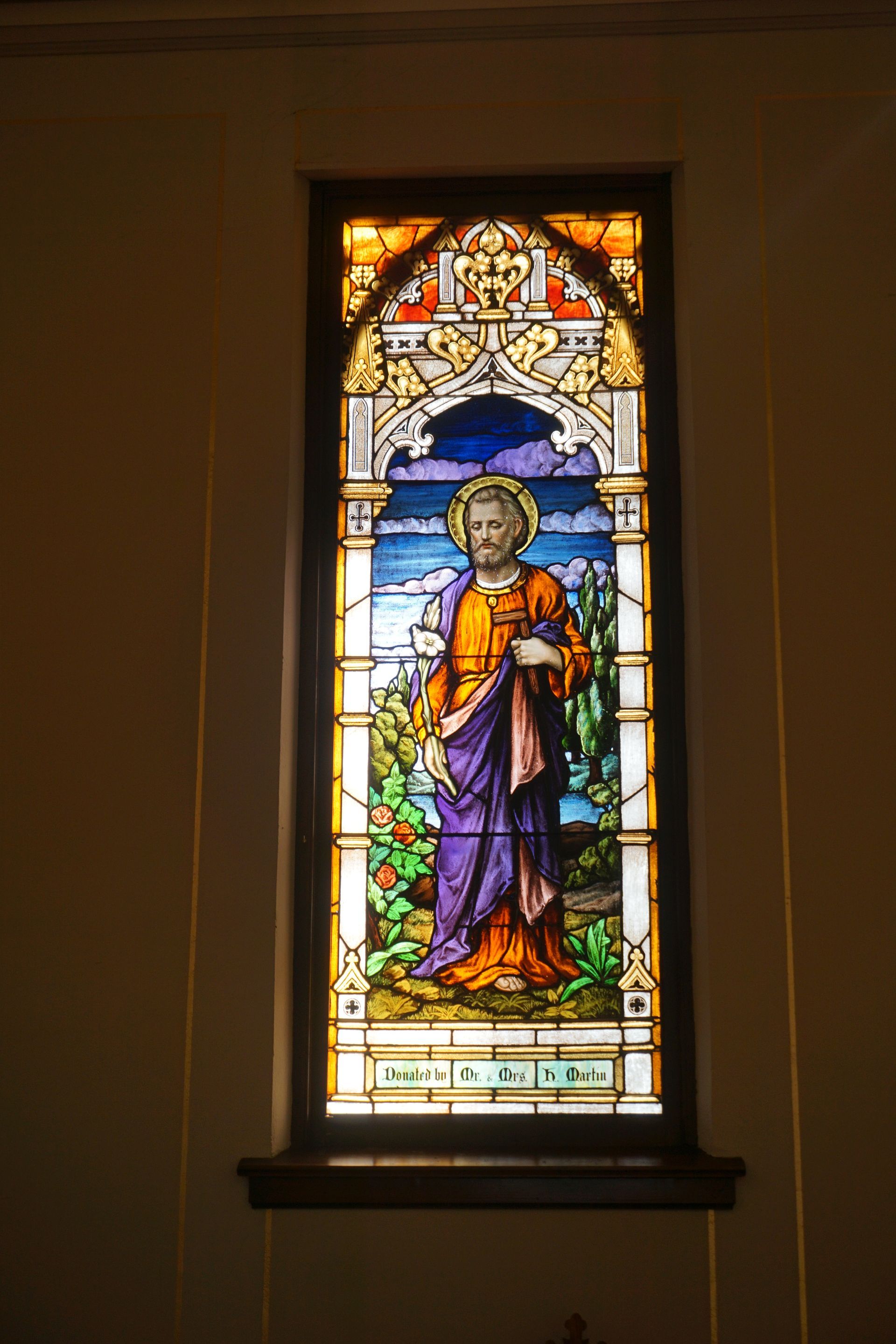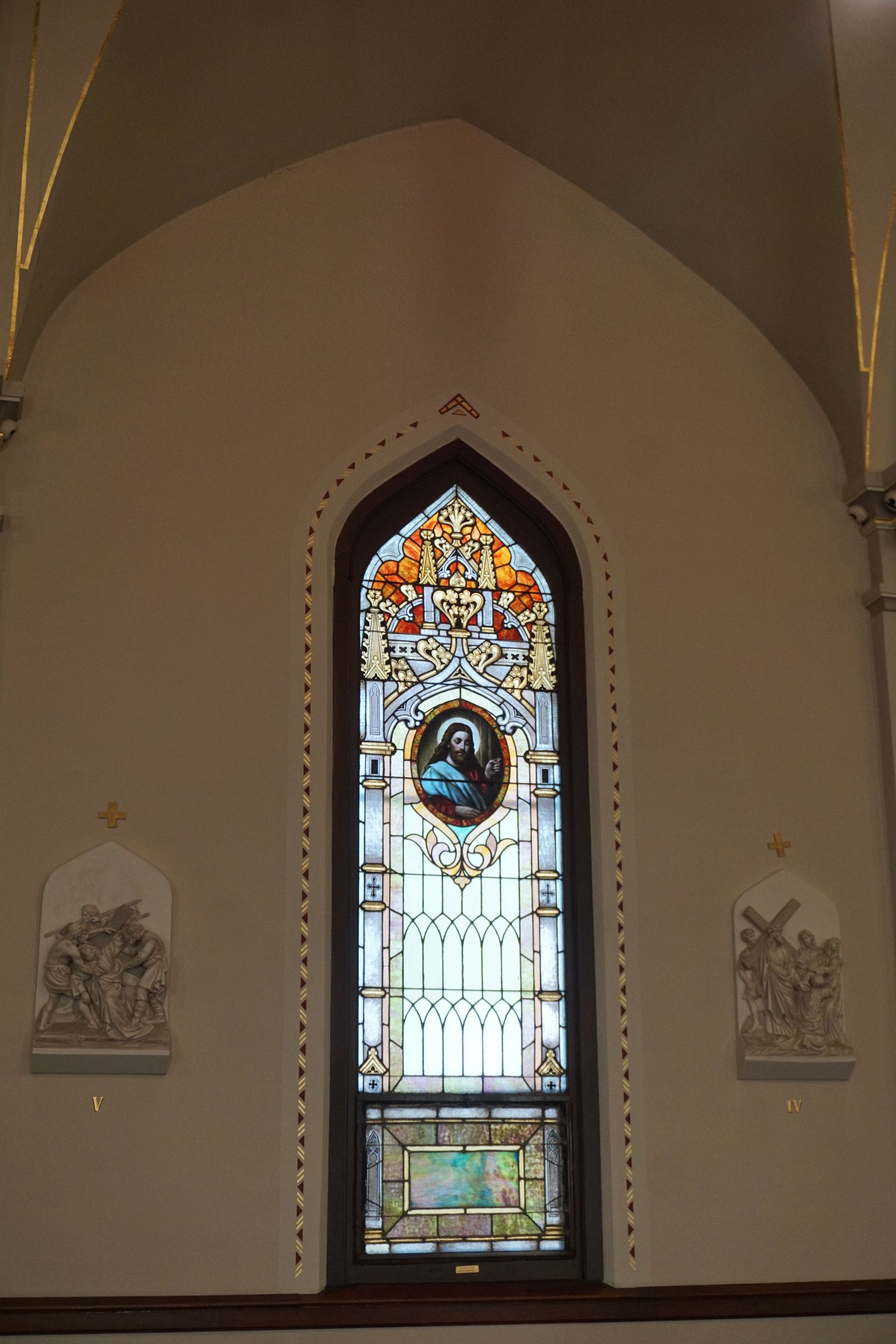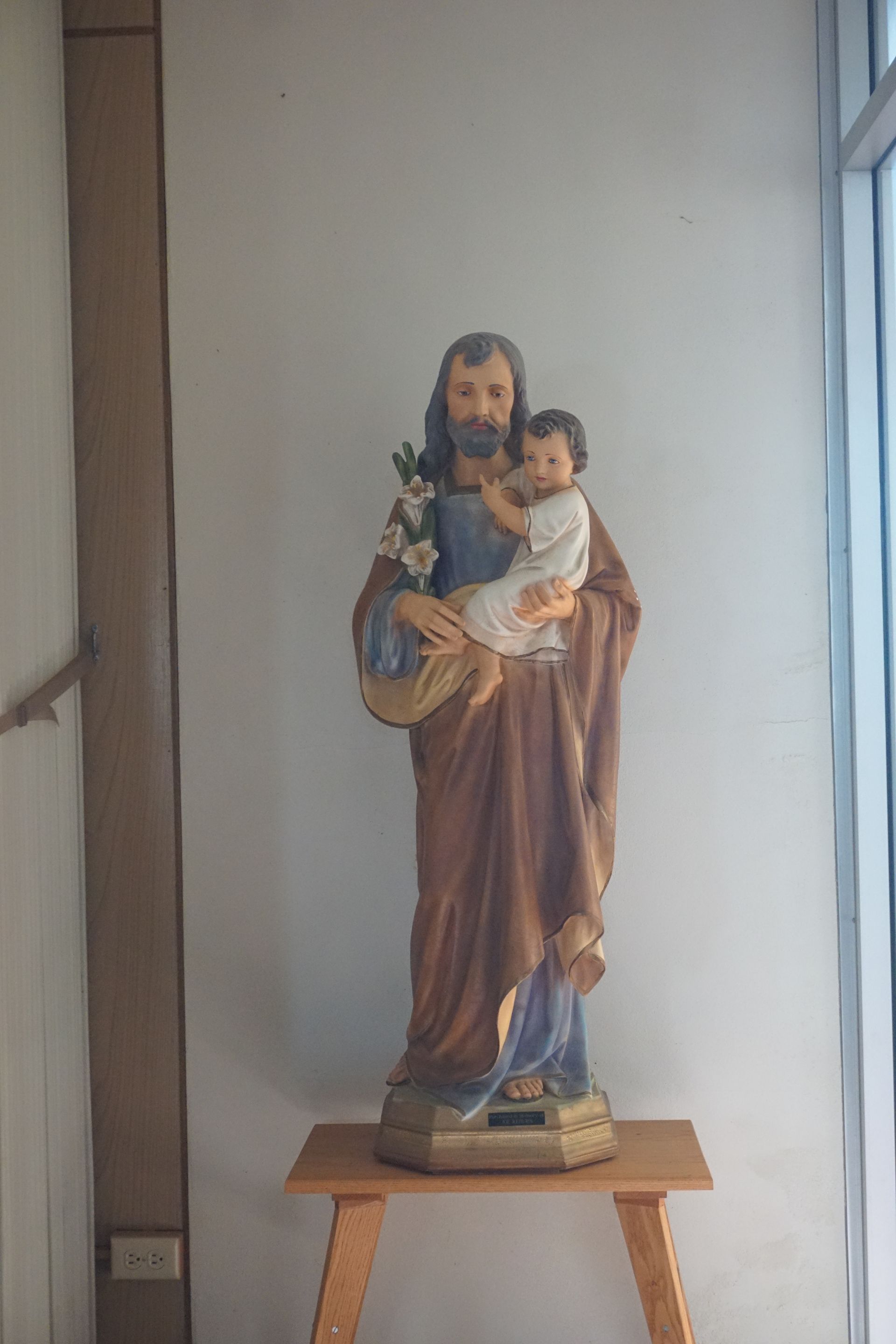In the extreme corner of Allamakee County, the state of Iowa, and the Archdiocese of Dubuque lies the parish of St. Joseph of New Albin. The Catholics of this community in the 1850’s and 1860’s attended mass in either Wexford (20 miles away) or Lansing ( 13 miles away), unless a wandering Missioner visited the humble log homes and offered the Holy Sacrifice of Mass.
Father Cornelius, pastor of Lansing, came in 1857 and in the winter of that year Mssrs. Martin Moore, Patrick Kelly, Eugene Kerrigan, Fred Hardy, Edmond Burke, John Hurley, Dan and Peter Early, and George Wilson (who was not a Catholic), hewed and hauled logs to a plot of land three miles southwest of New Albin donated by John Hurley for the erection of a church and cemetery. This land is presently owned by Don Hitchens off to the north on A26 / Iowa River Road. Maurice Caughlin and William Wright were the head carpenters of the course log church building, altar and rude benches. The confessional consisted of a curtain hung across one corner. Father's Cornelius, McGown, Walsh, and Jacoby were at the dedication in June 1867, when the church received the name of Holy Cross Church. The first baptism took place on December 2, 1868 with the baptism of Mary Alice Gabbett by Father Cornelius.
Holy Cross Church was used until the erection of a frame building in the town of New Albin in the year of 1875, two years before the entrance of the railroad. The church was built under the guidance of Father Jacoby of Lansing, and was given the name of St. Joseph. That building stood on what is now the St. Joseph Church parking lot adjacent to the north side of the present brick church. After the present church was built the old structure was moved to where the Alley Kat bar / restaurant stood in 2010. Emilia Batteen, George and Mary Eck, Elizabeth O'Reilly Joyce were among the first ones to be baptized.
